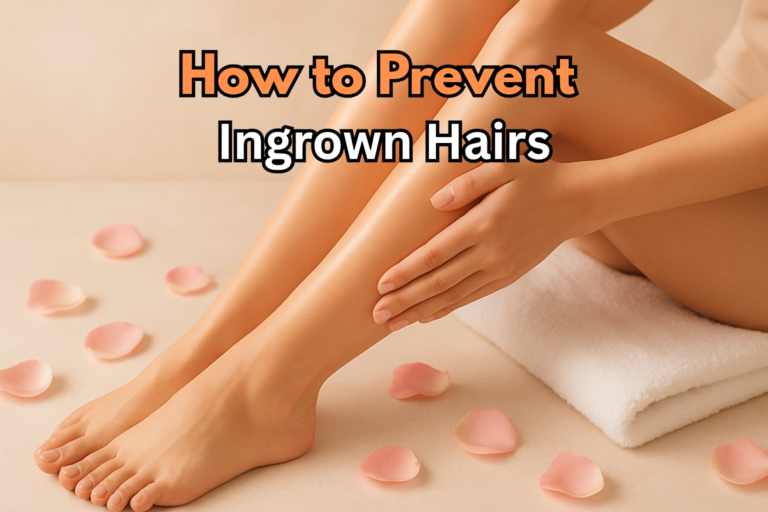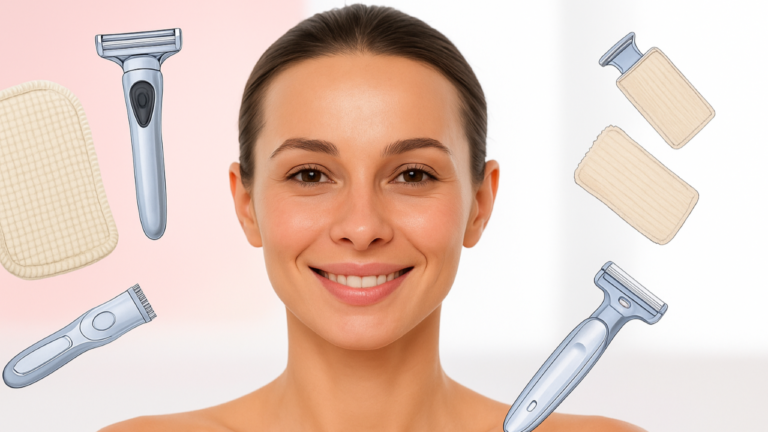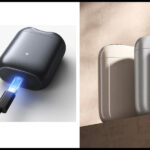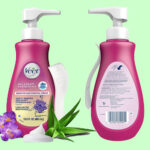Hair removal is a routine of every human being. But for beauty enthusiasts people it is a daily need. However, the side effects that come with it bring a range of skin side effects that need proper management. Each method can lead to skin irritation, dryness, and other issues. This article will discover how to handle these side effects to maintain soft and healthy skin.
Common Side Effects of Hair Removal
Before diving into remedies, let’s look at the common side effects of various hair removal methods:
Irritation and Redness
One of the most common reactions after hair removal is redness and skin irritation. These side effects happen especially after waxing and shaving. The hair removal process disrupts the outer layer of the skin. Which leaves the skin sensitive to environmental factors.

Ingrown Hairs
Ingrown hairs are common after shaving or waxing and occur when hair grows back into the skin rather than upward. This can lead to small, often painful bumps and even infections in some cases.
Bumps and Rashes
Rashes and small red bumps can develop as a result of the trauma hair removal causes to the skin. Shaving, in particular, may lead to folliculitis, which is an inflammation of the hair follicles.
Dryness and Itchiness
Removing hair can also strip the skin of its natural oils, resulting in dryness and itching, especially for those with sensitive skin.
Preparing Skin Before Hair Removal
A well-prepared skin barrier is less likely to react negatively to hair removal methods. Here are some effective steps to prepare the skin before treatment:
Cleansing and Exfoliating
Cleanse the skin with a mild, non-abrasive cleanser. It removes dirt and bacteria that could cause infections. Exfoliating helps clear dead skin cells, reducing the likelihood of ingrown hairs.
Hydrating and Moisturizing
Hydrating your skin in the days leading up to hair removal helps strengthen the skin barrier. Use a lightweight moisturizer, preferably fragrance-free, to keep the skin balanced.
Avoiding Sun Exposure Pre-Treatment
Sun exposure makes the skin more sensitive and prone to irritation. Try to limit direct sunlight at least 24 hours before hair removal.
Aftercare Essentials for Hair Removal
The right aftercare is essential to soothe and heal the skin. Here are the best ways to care for your skin immediately after hair removal:
Cooling the Skin
Applying a cold compress right after hair removal reduces inflammation and soothes redness. Ice packs or even chilled aloe vera gel can be very effective.

Hydration and Moisture Retention
Moisturizing after hair removal is crucial to replenish lost moisture. Look for hydrating ingredients like glycerin, hyaluronic acid, and aloe vera.
Avoiding Friction and Tight Clothing
Skin is especially delicate after hair removal. Opt for loose-fitting clothing to prevent rubbing or irritation from friction, which could aggravate sensitive areas.
Treating Redness and Irritation Post-Hair Removal
Redness can be uncomfortable, but with a few targeted treatments, it’s manageable:
Cool Compresses for Inflammation
Applying a cool compress helps constrict blood vessels, reducing redness and swelling. Wrap ice cubes in a cloth, or use a clean washcloth soaked in cold water.
Anti-Inflammatory Creams and Gels
Creams containing aloe vera or chamomile extract work wonders for calming redness. Avoid products with alcohol or fragrance as they can further irritate the skin.
Using Natural Soothing Agents
Ingredients like cucumber slices, oat milk, and rose water have natural anti-inflammatory properties. These can be applied gently to the skin for immediate soothing.
How to Handle Ingrown Hairs
Ingrown hairs can be painful, but they’re also preventable with the right techniques:
Prevention Tips During and After Hair Removal
Using a sharp, clean razor for shaving and avoiding too much pressure can prevent hair from growing inward. Exfoliate regularly with a gentle scrub to keep pores open.

Exfoliation Techniques to Prevent Ingrown Hairs
Exfoliating with a mild scrub or using a chemical exfoliant with salicylic acid or glycolic acid helps to keep hair follicles clear and prevents ingrown hairs.
Effective Treatments for Ingrown Hairs
If an ingrown hair does appear, resist the urge to pick at it. Instead, apply a warm compress to open the pores and gently exfoliate. Tea tree oil can also be used as it has anti-inflammatory and antibacterial properties.
Addressing Bumps and Rashes
Skin bumps and rashes are annoying but can be easily managed with a few simple remedies:
Identifying the Cause of Bumps and Rashes
Determine if the bumps are a reaction to the product or method used. Sometimes shaving creams, wax residues, or depilatory creams can cause an allergic reaction.
Topical Treatments and Home Remedies
Hydrocortisone cream or a fragrance-free lotion can soothe minor bumps. A paste made from baking soda and water can be applied for 10 minutes to reduce inflammation.
Importance of Gentle Skin Care Products
Switch to fragrance-free, hypoallergenic products if you notice recurring rashes. Harsh chemicals or perfumes often aggravate post-hair removal sensitivity.
Combating Dryness and Itchiness
Proper moisturization is key to avoiding dry, itchy skin after hair removal:
Best Moisturizers and Oils for Post-Hair Removal
Opt for moisturizers with hydrating ingredients like hyaluronic acid, glycerin, and ceramides. Oils such as coconut or jojoba oil also help restore moisture.
Hydrating Ingredients to Look for in Products
Look for calming ingredients like chamomile, allantoin, and panthenol, which have soothing effects. Ingredients like aloe vera can help maintain hydration without feeling heavy on the skin.
Tips to Reduce Itchiness Without Scratching
Scratching can lead to tiny tears in the skin, so avoid it if possible. Instead, apply a fragrance-free moisturizer or soothing balm to calm the itch.
Choosing the Right Hair Removal Method for Your Skin Type
Different hair removal methods affect skin types differently. Understanding what works best for your skin can prevent many side effects:
Different Methods and Their Impact on Skin
While laser and waxing tend to have longer-lasting results, they may be too intense for sensitive skin. Shaving is gentler but often needs more frequent application.
Skin Types and Suitable Hair Removal Techniques
Sensitive skin may do better with shaving or creams designed for delicate skin. For oily or acne-prone skin, a laser might be preferable as it reduces the need for frequent treatments.
Potential Reactions Based on Skin Type
People with sensitive or dry skin may notice more irritation with waxing or laser treatments. Patch tests are crucial for trying new hair removal methods.
Importance of Sun Protection Post-Hair Removal
Sun protection is vital after hair removal to prevent pigmentation and sensitivity:
Why Sun Exposure Can Worsen Side Effects
After hair removal, your skin may be vulnerable to UV rays, leading to burns or hyperpigmentation.
SPF Recommendations and Application Tips
Using a broad-spectrum sunscreen with SPF 30 or higher is essential after hair removal. Apply sunscreen generously, covering all exposed areas, especially those that underwent hair removal, as they are more susceptible to UV damage. Reapply every two hours if you’re outdoors, or after swimming or sweating, to maintain full protection.
When to Avoid Sun Exposure After Hair Removal
It’s best to stay out of the sun for at least 24–48 hours following hair removal, especially if you’ve undergone waxing or laser treatments, as these methods make the skin particularly sensitive. If you must be outside, wear protective clothing like hats and long sleeves, in addition to using sunscreen. The skin will benefit from this added layer of protection, reducing the likelihood of irritation or pigmentation.
Recommended Skincare Products for Post-Hair Removal
The products you apply to your skin after hair removal can greatly impact recovery and comfort. Choosing gentle, fragrance-free, and hydrating products will help prevent any adverse reactions.
Soothing Creams and Gels for Sensitive Skin
Look for creams that contain ingredients like aloe vera, chamomile, and calendula. These components offer soothing and anti-inflammatory benefits, ideal for calming post-hair-removal redness or irritation. Creams specifically formulated for sensitive skin, such as those from brands like Cetaphil or CeraVe, are generally safe and effective.
Serums for Hydration and Anti-Inflammatory Care
Hyaluronic acid serums can be an excellent option for hydration, as they provide deep moisture without clogging pores or feeling heavy. Anti-inflammatory serums containing ingredients like green tea extract or niacinamide can reduce redness and promote faster healing.
Ingredients to Avoid in Post-Hair Removal Products
Avoid products containing alcohol, artificial fragrances, and retinoids, as these can be overly harsh and may irritate freshly treated skin. Instead, opt for gentle formulas to help the skin recover without additional stress.
DIY Remedies for Hair Removal Side Effects
For those who prefer natural remedies, several DIY options can provide relief from hair removal side effects. These treatments use ingredients commonly found at home and can be customized based on your skin’s needs.
Aloe Vera, Coconut Oil, and Other Natural Treatments
Aloe vera gel is a fantastic natural option for reducing redness and soothing irritation. Coconut oil can be used to moisturize and lock in hydration, though it’s better suited for dry skin. For those with acne-prone skin, jojoba oil is a lighter alternative that provides moisture without clogging pores.
Recipes for Homemade Soothing Lotions
A simple, effective DIY lotion involves mixing aloe vera gel with a few drops of tea tree oil or chamomile essential oil. This blend provides a cooling effect and can be applied to sensitive areas after hair removal. Another option is an oatmeal paste (oats blended with water), which can help calm redness and itching when applied as a mask for 10–15 minutes.
Safety Tips When Using Natural Remedies
Although natural remedies are generally safe, it’s important to patch-test any new DIY solution before applying it fully. Essential oils, in particular, should be diluted with a carrier oil like coconut or olive oil to prevent irritation.
Long-Term Skin Care Strategies Post-Hair Removal
Taking care of your skin consistently, even between hair removal sessions, can prevent side effects from recurring and keep your skin in optimal health.
Consistent Exfoliation Routine
Regular exfoliation is key to preventing ingrown hairs and keeping skin smooth. Gentle exfoliation once or twice a week with a scrub or exfoliating brush can help remove dead skin cells and prevent hair from getting trapped beneath the surface.
Moisturizing and Skin Barrier Repair
Moisturizing daily helps maintain the skin’s barrier and prevents it from becoming dry and irritated. Look for products containing ceramides, which are beneficial for repairing and strengthening the skin barrier. These can be particularly useful after hair removal to prevent long-term irritation.
Importance of Keeping Skin Clean and Protected
Cleansing your skin daily with a gentle, non-drying cleanser removes impurities and bacteria, reducing the risk of post-hair-removal breakouts or infections. Keeping the skin clean and moisturized allows it to stay resilient and less prone to irritation from hair removal.
When to Seek Professional Help
While most hair removal side effects are mild and can be treated at home, some cases may require professional assistance.
Recognizing Signs of Infection or Severe Irritation
If you notice symptoms like excessive redness, pus, swelling, or pain that lasts more than a couple of days, it may indicate an infection or severe irritation. In these cases, it’s wise to consult a dermatologist for proper care.
Consulting Dermatologists for Persistent Issues
For individuals who consistently experience negative reactions, consulting a dermatologist can help identify underlying causes. Dermatologists can recommend alternative hair removal methods or prescribe treatments tailored to your skin type and concerns.
Professional Treatments for Recurring Side Effects
For persistent issues like ingrown hairs or skin reactions, professional treatments such as laser hair removal or dermatologist-approved exfoliating treatments might be effective options. These treatments can provide long-term solutions for skin that reacts negatively to traditional hair removal methods.
Conclusion
Keeping your skin healthy and free from irritation after hair removal doesn’t have to be complicated. By preparing your skin properly, choosing the right aftercare products, and incorporating gentle routines, you can enjoy smooth, soft skin without unwanted side effects. Whether you prefer professional treatments or DIY solutions, these tips can help you minimize redness, bumps, and dryness, ensuring a positive hair removal experience every time.








